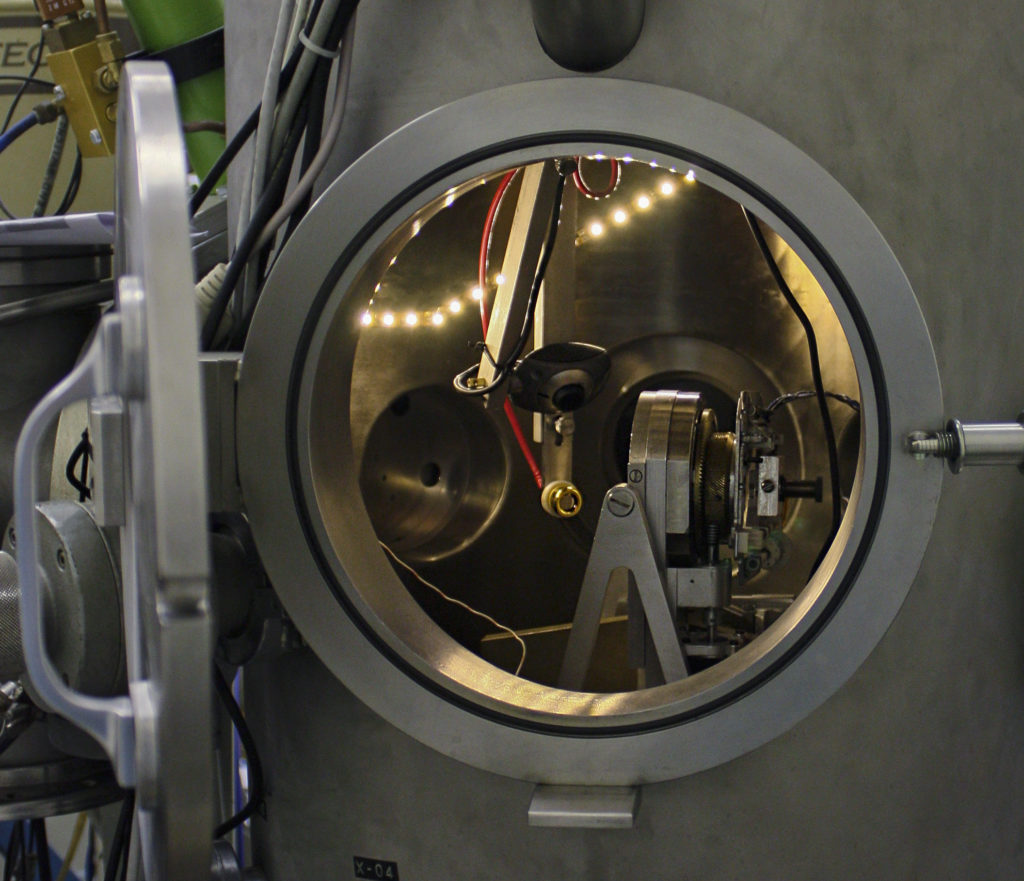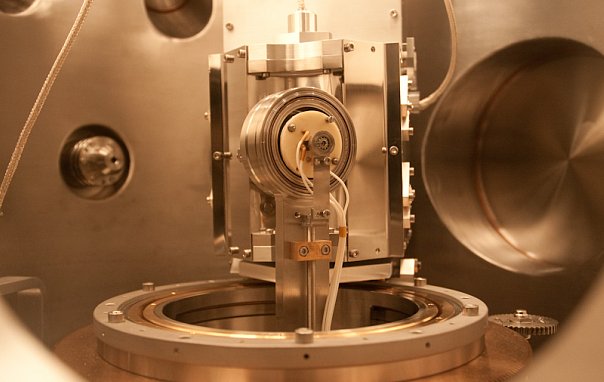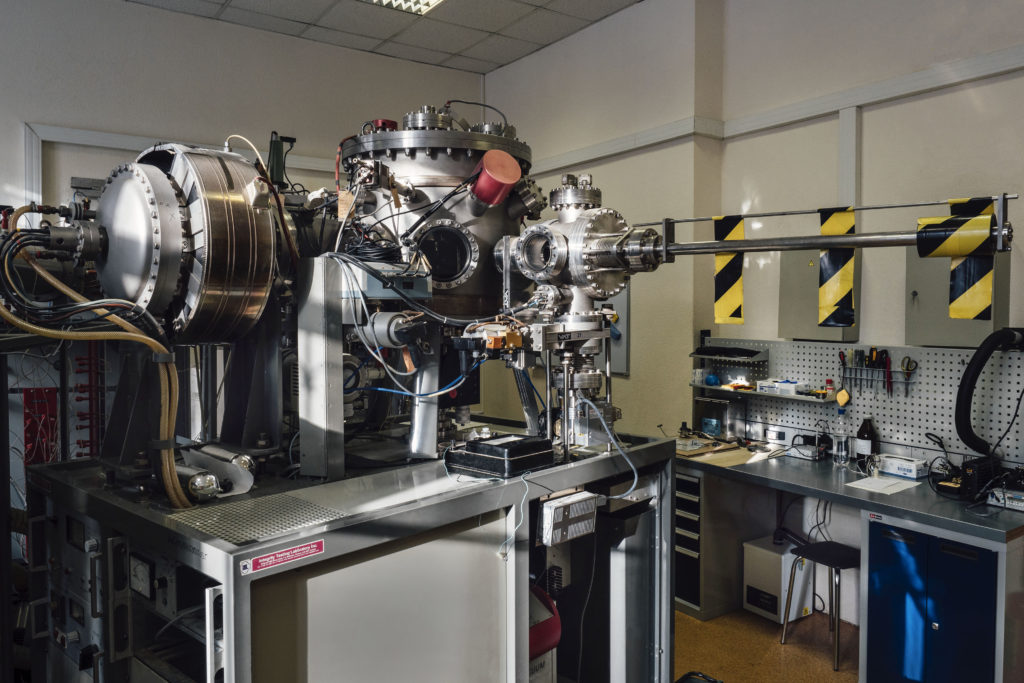The nuclear-physical method for studying solids is based on the use of a physical phenomenon – elastic scattering of accelerated particles by large angles during their interaction with atoms of matter. This method has long been used in nuclear physics to determine the composition of targets by analyzing the energy spectra of backscattered particles. The analytical capabilities of scattering of light particles are widely used in various fields of physics and technology, from the electronics industry to research on structural phase transitions in high-temperature compounds.
RBS Spectroscopy
The Rutherford backscattering method uses a beam of light analyzing particles (helium, hydrogen). Backscattered particles are detected by a semiconductor detector. When analyzing the energy spectra, kinematic relations are used, the known values of the scattering cross sections and the energy losses of particles passing through a particular substance. Thus, it is possible to identify the element on which backscattering occurs, and its concentration, which can be used to determine the stoichiometry of the compounds, as well as the thickness of the layer and its depth.
Features:
- Conducting research without destroying samples
- Determination of the depth of elements
- Particularly sensitive to heavy elements.
- The ability to study the crystal structure
- Depth resolution about 20 nanometers

MEIS Spectroscopy
Medium Energy Ion Spectroscopy (MEIS) is based on the principle of Rutherford backscattering. A distinctive feature of MEIS is the use of ions with lower energy than in the traditional method of RBS, therefore, by using the MEIS method it is possible to study thicknesses up to 200A. A more serious difference lies in the measurement tools. To analyze backscattered ions, the POP method uses silicon depleted detectors, which have a resolution limit of ~ 15 keV.

The MEIS method uses ions with energies below 200 keV, which can be deflected using an electrostatic analyzer. The resolution is determined by the field and size of the entrance slit. Another important advantage of the electrostatic analyzer is that at a resolution of 15 keV, RBS allows you to examine a sample with a resolution of up to 200A in depth, while an electrostatic analyzer allows you to analyze the energy of scattered ions with a resolution of 100 eV and, therefore, examine the surface of the sample with a resolution in angstroms . This technique was implemented in our laboratory using an experimental ultra-high vacuum chamber from HVEE. The electrostatic analyzer allows us to analyze backscattered ions with energies up to 130 keV with a resolution of about 300 eV, which is equivalent to losses in a 10A thick gold layer.

